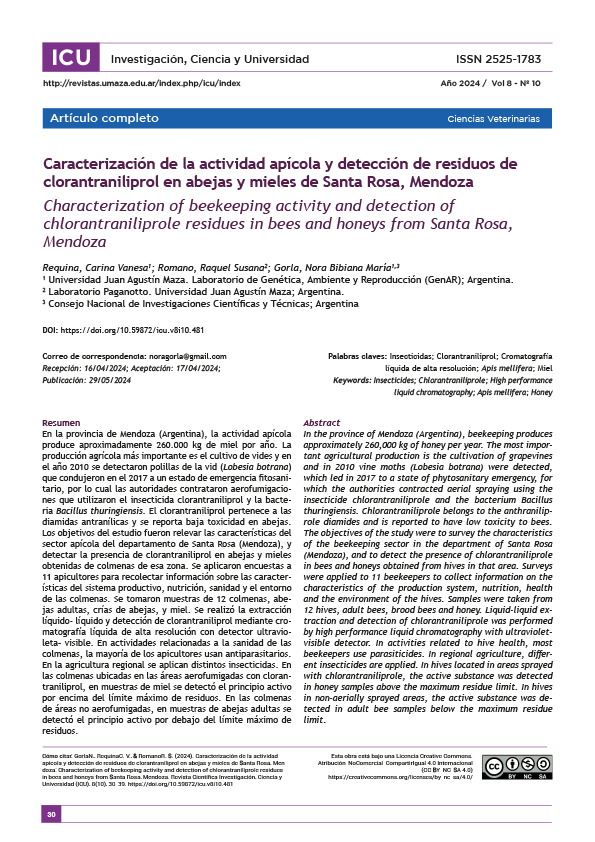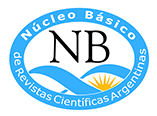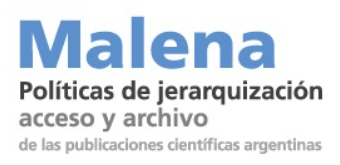CHARACTERIZATION OF BEEKEEPING ACTIVITY AND DETECTION OF CHLORANTRANILIPROLE RESIDUES IN BEES AND HONEYS FROM SANTA ROSA, MENDOZA
Characterization of beekeeping activity and detection of chlorantraniliprole residues in bees and honeys from Santa Rosa, Mendoza
DOI:
https://doi.org/10.59872/icu.v8i10.481Keywords:
Insecticides; Chlorantraniliprole; High performance liquid chromatography; Apis mellifera; HoneyAbstract
In the province of Mendoza (Argentina), beekeeping produces approximately 260,000 kg of honey per year. The most important agricultural production is the cultivation of grapevines and in 2010 vine moths (Lobesia botrana) were detected, which led in 2017 to a state of phytosanitary emergency, for which the authorities contracted aerial spraying using the insecticide chlorantraniliprole and the bacterium Bacillus thuringiensis. Chlorantraniliprole belongs to the anthraniliprole diamides and is reported to have low toxicity to bees. The objectives of the study were to survey the characteristics of the beekeeping sector in the department of Santa Rosa (Mendoza), and to detect the presence of chlorantraniliprole in bees and honeys obtained from hives in that area. Surveys were applied to 11 beekeepers to collect information on the characteristics of the production system, nutrition, health and the environment of the hives. Samples were taken from 12 hives, adult bees, brood bees and honey. Liquid-liquid extraction and detection of chlorantraniliprole was performed by high performance liquid chromatography with ultraviolet-visible detector. In activities related to hive health, most beekeepers use parasiticides. In regional agriculture, different insecticides are applied. In hives located in areas sprayed with chlorantraniliprole, the active substance was detected in honey samples above the maximum residue limit. In hives in non-aerially sprayed areas, the active substance was detected in adult bee samples below the maximum residue limit.
Downloads

Published
How to Cite
Issue
Section
Categories
License
Copyright (c) 2024 Carina Vanesa Requina, Raquel Susana Romano, Nora Bibiana María Gorla

This work is licensed under a Creative Commons Attribution-NonCommercial-ShareAlike 4.0 International License.





















